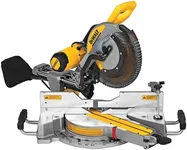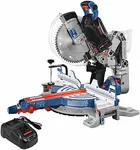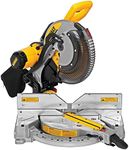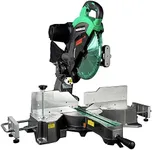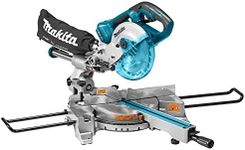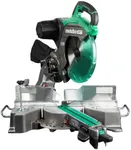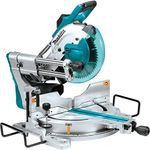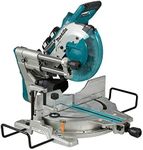Buying Guide for the Best Miter Saws
Choosing the right miter saw can make a big difference in the quality and ease of your woodworking or DIY projects. Miter saws are designed to make precise crosscuts and angled cuts, which are essential for tasks like framing, molding, and trim work. To find the best fit for your needs, it's important to understand the key features and specifications that affect performance, versatility, and ease of use. By focusing on these aspects, you can select a miter saw that matches your project requirements and skill level.Blade SizeBlade size refers to the diameter of the saw blade, and it determines the maximum width and depth of cut the saw can make. Common sizes are 7-1/4, 10, and 12 inches. Smaller blades are lighter and easier to handle, making them suitable for light trim work or small projects. Larger blades can cut through thicker and wider materials, which is useful for framing or larger woodworking tasks. To choose the right blade size, consider the types of materials and the size of the pieces you plan to cut most often.
Type of Miter Saw (Standard, Compound, Sliding, Dual-Bevel)There are several types of miter saws, each offering different capabilities. A standard miter saw makes straight and angled cuts, ideal for basic trim work. A compound miter saw can tilt to make bevel cuts, which is useful for crown molding and more complex angles. Sliding miter saws have a sliding arm that allows the blade to move forward and backward, increasing the cutting width for larger boards. Dual-bevel models can tilt both left and right, making it easier to make bevel cuts in both directions without flipping the workpiece. Think about the complexity of your projects and whether you need to make bevel or wide cuts to decide which type suits you best.
Cutting CapacityCutting capacity describes the maximum width and thickness of material the saw can cut in a single pass. This is influenced by both the blade size and whether the saw has a sliding feature. Saws with greater cutting capacity are better for larger boards and more versatile projects, while smaller capacities are fine for trim and small pieces. Match the cutting capacity to the size of materials you expect to work with most frequently.
Accuracy FeaturesAccuracy features include things like laser guides, LED cut lines, and positive stops at common angles. These features help you make precise cuts and reduce mistakes. Laser or LED guides project a line onto your workpiece, showing exactly where the blade will cut. Positive stops allow you to quickly set the saw to common angles, saving time and improving consistency. If you value precision or are new to using miter saws, these features can make your work easier and more accurate.
Dust CollectionDust collection refers to the saw’s ability to capture and manage sawdust created during cutting. Some miter saws come with built-in dust bags or ports for attaching a vacuum. Good dust collection keeps your workspace cleaner and improves visibility while cutting. If you work indoors or want to minimize cleanup, look for a saw with effective dust collection features.
Portability and WeightPortability and weight are important if you need to move your miter saw between job sites or around your workshop. Lighter, more compact saws are easier to transport and store, but may have smaller cutting capacities. Heavier saws are often more stable and robust, which can be beneficial for frequent or heavy-duty use. Consider how often you’ll need to move the saw and where you’ll use it most to determine the right balance for you.


